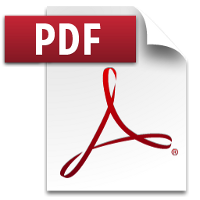 Conversion of South African Special Risks Insurance Association, 1998
Conversion of South African Special Risks Insurance Association, 1998
R 385
Perishable Products Export Control Act, 1983 (Act No. 9 of 1983)RegulationsRegulations relating to the Export of Perishable Products, 2025 - effective July 2025Chapter 9: LoadingPart A: Requirements for loading of all Perishable Products62. Obligations of the Board |
| (1) | The Board may at any stage allocate a UPN to any consignment of perishable product. |
| (2) | The Board shall take appropriate measures to ensure that all perishable product is optimally and correctly stowed, handled and loaded according to the Board’s standards and requirements and in accordance with these regulations. |
| (3) | The Board shall ensure that: |
| (a) | Cold chain service providers at handling and loading points are registered with the Board, and the holder of a registration certificate, as provided in regulation 8(3); |
| (b) | Only equipment and facilities certified by the Board shall be used to store and transport any perishable product; |
| (c) | Perishable product is handled, loaded, and transported within minimum and maximum temperature ranges and is transported within applicable TTT’s; |
| (d) | Only approved packaging and pallets are used for the handling, storage and transport of perishable product; |
| (e) | Documentation with regard to the notification and preparation of the loading process, equipment and subsequent monitoring, are accurately completed and timeously communicated and made available to relevant parties as required from time to time by the Board; |
| (f) | All perishable product that is destined for export to an importing county that requires such perishable product to be subjected to a cold treatment regime, shall be subjected to such cold treatment regime and any further specifications or requirements as may be stipulated from time to time by the Board; |
| (g) | All perishable product is protected from the elements, temperature increases and any contamination by odours, gasses, chemicals, dust, rain or any other material that may detrimentally affect the integrity of the perishable product; and |
| (h) | Perishable products are optimally and correctly stowed in the mode of transport or cold storage facility so as to allow for optimal refrigeration and temperature control. |
| (4) | Only perishable product that complies with the relevant requirements of these regulations and/or the APS Act, and/or any other certification or sanitary requirements, shall be loaded into transport spaces. |
| (5) | The Board shall, except in the case of ambient shipments of a perishable product, ensure that only pre-cooled perishable product that has been approved by the Board is loaded into approved transport spaces. |
| (6) | The Board shall notify the relevant exporter and/or cold chain service provider and identify the approved perishable product, and issue an approval certificate or relevant document on request. |
| (7) | The following requirements shall apply to perishable products presented to the Board prior to loading: |
| (a) | All perishable product shall be measured for compliance with temperature requirements before it can be loaded into approved transport spaces; |
| (b) | Perishable product stored prior to loading shall be kept dry, pest and mould free; |
| (c) | The condition of the packaging shall be clean, undamaged, ventilated and shall protect the integrity of the perishable product; |
| (d) | Pallet bases shall be in a sound and sturdy condition, dry, and mould and bark free; |
| (e) | All pallet bases and dunnage shall adhere to the ISPM 15 requirements; |
| (f) | All cartons shall be correctly stowed and strapped to the pallet bases; |
| (g) | Load stabilising material and methods used for the handling, storage, transport and discharge of perishable product shall not negatively affect the perishable product and/or packaging material and the safety of cold chain service providers; |
| (h) | Floor spaces of partly loaded specialised refrigerated vessels or refrigerated containers shall be covered; |
| (i) | Pallet height shall not restrict air flow, and shall not exceed the maximum load height line or fan spaces; |
| (j) | Where pallets are double-stacked, racking or pallet irons shall be used; and |
| (k) | External and internal dunnage shall be used where necessary in the support of perishable product, and such dunnage shall be suitable for the purpose intended, and at all times be clean, dry, pest, and mould and bark free. |
| (8) | Loading equipment shall be well maintained, clean, and of such design that it does not damage perishable product and hamper the loading process. |
| (9) | Diesel forklifts shall only be used outside storage facilities and transport spaces. |